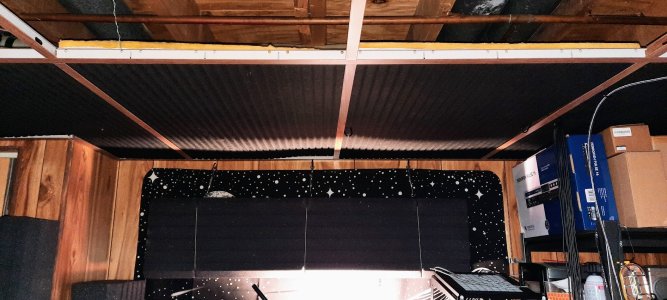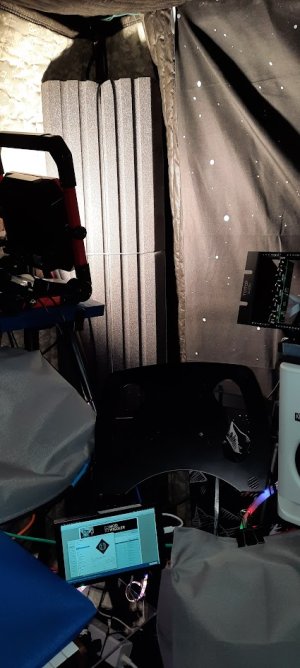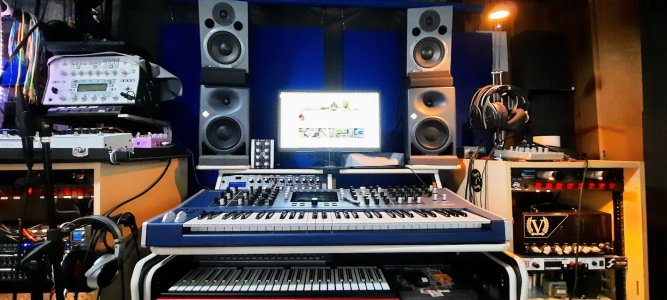- Messages
- 830
Lets talk studio treatments. This project for me is long over due. Just arrived is the last major portion of my studio infrastructure project. Earlier this year, I removed my Yamaha TF5 mixer out of the studio and went to full patchbay setup to route all my gear audio. I clean up the crazy amount spaghetti cabling for audio, USB, MIDI, digital, and power. Everything is much easier to manage and is more flexible. Now, the most important part of studio improvements is room treatments and new monitors.
Here are Acoustimac 3x3 wall/ceiling panel bass traps, Auralex SonoColumns corner bass traps, and Neumann KH150 monitors + MA 1 acoustic alignment microphone. This was a costly investment, but I'm certain it'll be all worth it. Looking forward the install later this week.




Here are Acoustimac 3x3 wall/ceiling panel bass traps, Auralex SonoColumns corner bass traps, and Neumann KH150 monitors + MA 1 acoustic alignment microphone. This was a costly investment, but I'm certain it'll be all worth it. Looking forward the install later this week.













 I kid, I kid. With a grain of truth.
I kid, I kid. With a grain of truth.

